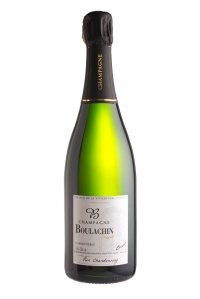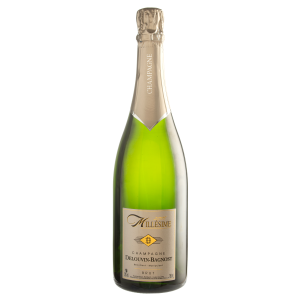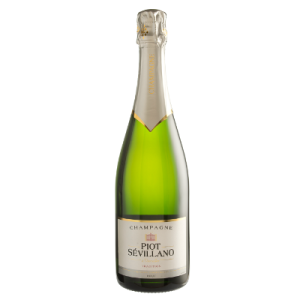Pink champagne….you either love it or you hate it. Some find it far too sweet and artificial, others find it too fizzy (which, by the way, is often caused by the higher tannin content in pink champagnes than in white, attracting more CO2). Then you get the exceptions that are really dry and lack flavour and the only interesting thing about the wine is the colour.
Well, it may be some relief to know, that even with my job and as a huge fan of all things vinous, I tend to share many of these opinions and I make no secret of the fact that our search of decent rosé champagnes has been a tricky one.
These days, every champagne house worth their salt seems to have a rosé amongst their collection – their clients demand it. There is no prettier drink to serve on a warm summers day, especially if celebrating a momentous occasion, than a glass of pink champagne. But in my humble opinion, if the taste isn’t there, you may as well serve a glass of fizzy water with some pink grapefruit cordial (which is quite nice by the way).
So when deciding which champagnes to include in our quarterly cases, we don’t take the decision to include a pink lightly. We know it is always going to be a controversial move, with some of our clients avidly claiming their dislike for the style, whilst others will embrace it provided it has sufficient flavour and is memorable, for the right reasons.
On our Pinot Meunier adventures we found that generally, the rosés produced using the “saignée” method (gradually extracting the juice from the grape skins before mixing back together to give a deeper colour and often, flavour) exhibited a much more intense, fruity flavour, possibly because the flavours of the grape had more chance to mature and develop.
The blended versions, made with still red wine taken from Pinot Meunier grapes were fruity and floral, but quite light and subtle (in flavour and colour) in comparison. In both cases, the champagnes were drier than rosés usually are. Just like the Meunier whites we tasted, there was much diversity not just from house to house, but also within the same vineyard.
Some growers used oak to add additional depth and character to their pink champagnes, giving a hint of smokiness – one example being Alain Bailly from Serzy et Prins. His exclusive rosé had strong flavours of black cherry and finished with a surprising minerally kick – something of a trend we noticed with Meunier pinks. It took us a little by surprise. The rosé champagnes from the Vallée de la Marne, high in Meunier content, exhibited more savoury flavours than we have been used to with Pinot Noir or Chardonnay.
There were elements of fruit coming through, but this was matched with a distinctive minerality we have never seen before with pink champagnes. Nowhere was this more evident than at the quaint little vineyard of Joel Gobancé in Savigny-sur-Ardres in the Vallée de l’Ardres. With parcels of vines spread over 5 communes, including the Vallée de la Marne and Chateau Thierry, this might explain why their champagnes bring such unique flavours to the table. The Brut Rosé is made from 90% Pinot Meunier, 5% Pinot Noir and 5% Chardonnay.

Cédric Gobancé is one of three brothers to manage the house today and chief wine maker – the others have pursued alternative careers, but still maintain an interest in the vineyard since taking over from their father in the early 90s. Gaston Gobancé began cultivating vines in the 1960s, though purely for the provision of merchant houses. In 1990, the family invested in a press and cellar and began producing their own champagnes. For a relatively young house, they are pushing out some interesting cuvées and even though they are at the beginning of their journey, there is much ambition to turn the brand into something quite special.
Cédric uses the “assemblage” method to make his pink, blending a little Pinot Meunier still wine with the white to give a very elegant peach colour to the champagne, dressed in a beautiful clear glass bottle. He also ages it for 4 years prior to disgorging to give the flavours and aromas a chance to fulfil their true potential.
The champagne has a nice soft fragrance and florality, as is usual with a Meunier-based champagne with an underlying musty depth. On the palate, it is quite complex, with a surprising minerality, almost flint-like finish after an initial hint of red fruits. It has a decent length considering it’s dryness too. When we presented this rosé to our Club Members, one justifiably noted hints of strawberries….soaked in vinegar. Perhaps that sounds unpleasant, but many thought it was intriguing, which kept them coming back for more.
With such savoury elements to a champagne variety that one would usually pair with fruit desserts or chocolate cake, this makes for an interesting selection of possible pairings. We think it would go very well with seafood or shell fish, or even a musty, earthy cheese like a Délice de Bourgogne or Chabichou.

It is refreshing to find pink champagnes with a bit of difference. Of course, this one did still divide the crowd, but those who usually dismiss a rosé fairly early on actually found themselves rather enjoying Gobancé’s masterpiece, which reinforces to us the importance of trying a wide variety of champagne styles as they often take you by surprise.
It is important to remember also that in some years, producers forego the production of their rosé champagnes altogether as they are not satisfied with the quality of the grapes. Given the sensitive nature of Pinot Meunier, this is even more prevalent with our most recent producers and so we should appreciate the specialist cuvées as they are not always easy to come by.
You can find out more about this one here.
We hope you have found our Meunier adventures interesting. Stay tuned for summer, coming soon, where there will be more tales from the world of grower champagne.
Best wishes,
Karen
Chief Bubble Taster @ The Real Champagne Company
PS. Did you know….The Pinot Meunier vines are always pruned and tied first as they are able to replenish their crop if damaged by frost? They are shortly followed by Pinot Noir, which has more robust grape skins, finishing with Chardonnay, one of the most sensitive of all grape varieties.

















